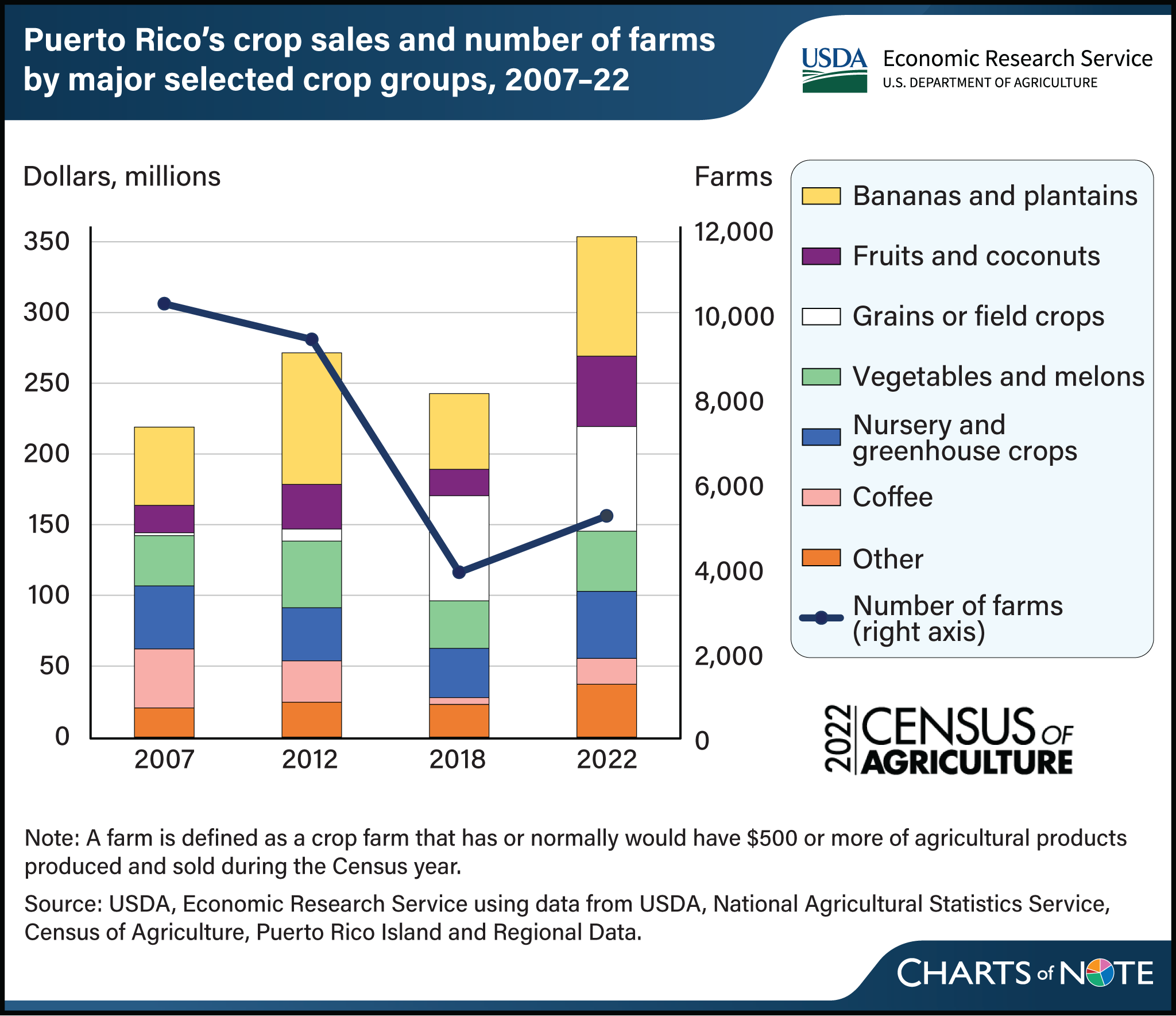2022 Census of Agriculture: Puerto Rico farms with crop sales show rebound following 2017 hurricanes
- by Angelica Williams, James Kaufman and Bart Kenner
- 10/10/2024

The number of farms in Puerto Rico growing crops and the sales value of those crops increased between 2018 and 2022, according to data from the 2022 Census of Agriculture. The previous Census captured the effects of major destruction to Puerto Rico’s agricultural sector caused by Hurricanes Irma and Maria in late 2017. The hurricanes’ impact was spread across all crops, with the number of farms falling 59 percent from 9,367 farms in 2012 to 3,877 farms in 2018. The damage accelerated the trend of consolidation of crop land from smaller farms to fewer, larger farms. Initially, the damage led to a transition away from fruit- and coffee-producing trees, which take time to bring to productive maturity, and to grain and other field crops, which are quicker to generate revenue. While other crop sales declined by 36 percent from 2012 to 2018, grains and field crops sales increased nearly eightfold and retained that level of sales from 2018 into 2022. More recently, spurred by rising global prices, coffee sales grew by 280 percent, from $4.8 million to $18.1 million between 2018 and 2022. Fruit and coconut sales grew by nearly 168 percent, while banana and plantain sales rose by 58 percent. Sales for other crops (pineapples, root crops or tubers, and grasses) increased by 62 percent in 2022. Total crop sales for 2022, which were partly driven by higher prices, surpassed 2012, growing by 46 percent from 2018 to 2022 to $353 million. For more details on the hurricanes’ effect on Puerto Rico’s agricultural sector, see the USDA, Economic Research Service report, Puerto Rico’s Agricultural Economy in the Aftermath of Hurricanes Irma and Maria.


